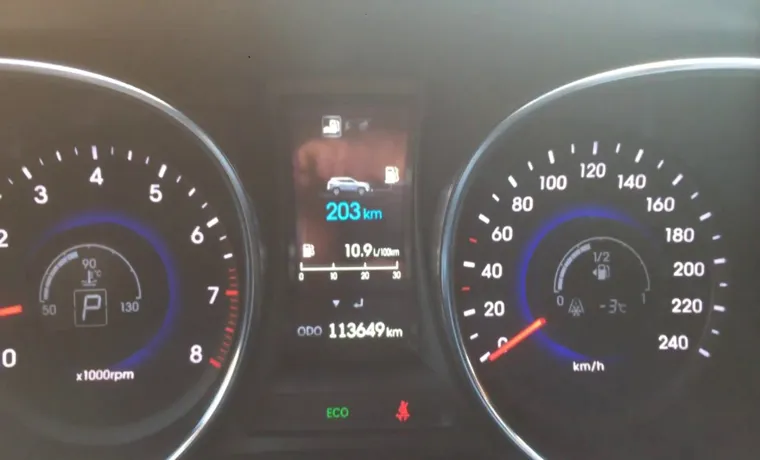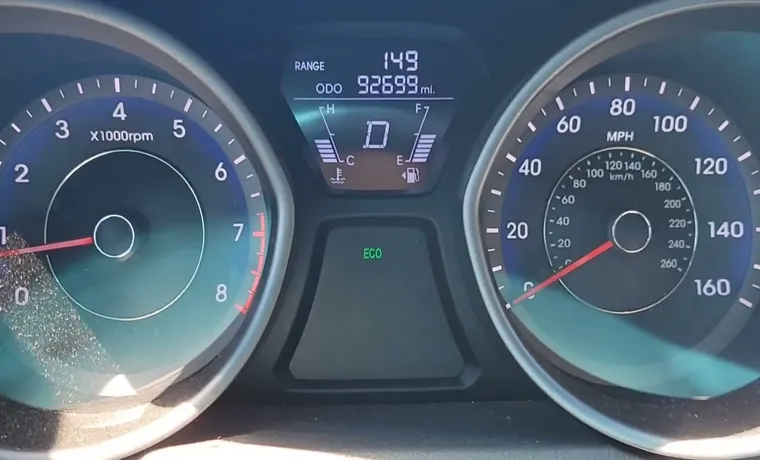Have you ever been driving down the road on a beautiful sunny day, only to have your Hyundai’s tire pressure light suddenly come on? It can be frustrating and even scary to see that warning light pop up unexpectedly. However, resetting the tire pressure light is a straightforward process that you can do yourself. In this step-by-step guide, we’ll walk you through the process of resetting your Hyundai’s tire pressure light, so you can get back on the road worry-free.
Whether you’re a seasoned driver or a new one, this guide will give you all the information you need to know about resetting your Hyundai’s tire pressure light. So, let’s dive in!
Table of Contents
Understanding the Tire Pressure Monitoring System
If you own a Hyundai and the tire pressure light comes on, don’t worry. This is just an automatic warning system called the Tire Pressure Monitoring System (TPMS) telling you that one or more of your tires requires attention. The most common reason for this warning is low tire pressure, so it’s a good idea to check your tires’ pressure using a tire pressure gauge.
If the pressure is low, add some air to the tires until they reach the recommended PSI level, which is usually found in the owner’s manual or the driver’s side door jamb. Once all tires are at the correct pressure, you can reset the TPMS by pressing and holding the TPMS reset button or following a sequence of pressing buttons on your dashboard. And there you have it – your Hyundai tire pressure warning light is reset, and you can drive with confidence knowing your tires are properly inflated.
What is the Tire Pressure Monitoring System?
The Tire Pressure Monitoring System (TPMS) is an essential safety feature installed in modern vehicles. It constantly monitors the air pressure in each tire and alerts the driver if any tire becomes underinflated. This is crucial because driving on underinflated tires can cause poor handling, reduced fuel efficiency, and even tire blowouts.
The TPMS can be either direct or indirect. Direct TPMS sensors are installed inside each tire, while indirect TPMS uses the wheel speed sensors to calculate tire pressure. Maintaining correct tire pressure is essential for safe driving, and the TPMS provides a reliable way to keep track of it.
So, next time you see the TPMS warning light on your dashboard, don’t ignore it. Instead, pull over and check your tire pressure right away to stay safe on the road.

Why is the Tire Pressure Monitoring System Important?
The Tire Pressure Monitoring System (TPMS) is an essential component for the safety of your vehicle. It is responsible for monitoring the air pressure within each of your car’s tires. Maintaining the recommended pressure level of your tires is crucial for several reasons.
First, it ensures maximum tire performance, including better fuel efficiency, improved steering control, and longer lifespan. Secondly, it helps prevent dangerous blowouts or accidents caused by underinflated or overinflated tires. TPMS alerts drivers when the tire pressure level is low or high and provides an early warning system that can prevent accidents.
Regularly checking your tire pressure is not enough as it only tells you about the current air pressure, but TPMS keeps a constant vigil on your tires’ air pressure, even when the car is moving, making it an important safety feature in modern cars. In summary, the Tire Pressure Monitoring System is an essential safety feature that ensures your vehicle operates at peak performance and helps prevent accidents.
What Causes the Tire Pressure Light to Turn On?
As a driver, you may have noticed the tire pressure light randomly turning on, prompting you to check your tires’ pressure level. This warning light usually indicates that at least one tire’s pressure has dropped to an unsafe level. It’s important to address this issue promptly, as underinflated tires can cause poor fuel efficiency, affect your vehicle’s handling, and even lead to a tire blowout.
The tire pressure light is triggered by a monitoring system that uses sensors in each tire to measure their pressure levels. The system then relays this information to your vehicle’s onboard computer, which will illuminate the tire pressure light if there’s a problem. Factors that can cause tire pressure to drop include extreme temperatures, a puncture, or even a gradual leak over time.
To avoid triggering this warning light, it’s crucial to check your tires’ pressure level periodically and maintain them at the recommended level.
Checking Your Tire Pressure
If you’re wondering how to reset your Hyundai tire pressure light, it’s a simple process that you can do yourself. Before resetting the light, it’s important to ensure that your tire pressure is at the recommended level for your specific vehicle. You can do this by using a tire pressure gauge to check the pressure of each tire.
Once you’ve confirmed that your tire pressure is at the proper level, you can reset the tire pressure light by following a few easy steps outlined in your owner’s manual. Generally, this involves pressing a button on your dashboard or navigating through your vehicle settings to reset the indicator. It’s important to reset the light after you’ve corrected the tire pressure because otherwise, you’ll continue to see the warning light every time you start your car.
By performing this simple task, you can ensure that your vehicle’s tire pressure is properly maintained for better fuel efficiency, tire life, and overall safety on the road.
How to Check Your Tire Pressure
Checking your tire pressure is an important routine maintenance task that should be done regularly to ensure your vehicle runs smoothly and efficiently. It’s easy to neglect checking your tire pressure, but it’s essential to do so to avoid accidents, reduce wear and tear, and save on fuel costs. To get started, you’ll need a tire pressure gauge that can be found at any auto parts store.
Simply unscrew the valve cap from each tire and press the gauge onto the valve stem. You’ll hear a hissing sound, which means you’re getting a reading. Check your owner’s manual or the sticker on the driver’s side door frame for the recommended PSI (pounds per square inch) for each tire.
If your tire pressure is too high, release air until it matches the recommended PSI. Alternatively, if it’s too low, add air until it reaches that amount. Remember to check your spare tire as well, as it’s just as important as your other tires.
By checking your tire pressure regularly, you can extend your tire’s lifespan, save on gas mileage, and ensure a safer driving experience.
What to Do if Your Tire Pressure is Low
Checking Your Tire Pressure It’s important to keep an eye on your tire pressure to ensure safe and efficient driving. Low tire pressure can cause reduced fuel economy, poor handling, and increased risk of accidents. Checking your tire pressure regularly is a simple task that can be done at home with a tire pressure gauge.
Start by removing the valve cap and pressing the gauge onto the valve stem. The gauge will display your tire pressure, and you can compare it to the recommended pressure listed in your vehicle’s owner’s manual or on the tire itself. If your tire pressure is low, use a pump to inflate the tire to the correct pressure.
Checking your tire pressure regularly will help ensure that your vehicle stays safe and efficient on the road.
Resetting the Tire Pressure Light
If you’re wondering how to reset your Hyundai tire pressure light, you’re in the right place. The process is relatively simple and can be done in just a few steps. First, locate the TPMS reset button, which is usually located underneath the steering wheel or in the glove box.
Once you’ve found the button, turn the ignition on but do not start the engine. Then, press and hold the reset button for three seconds until the TPMS light blinks slowly. Release the button and wait until the light goes out completely.
Finally, turn off the ignition and start the engine to make sure the light is no longer illuminated. It’s important to keep in mind that if your tire pressure is still low, the light may come back on and indicate that you need to add air to your tires. By following these simple steps, you can easily reset your Hyundai tire pressure light and ensure that your vehicle is safe and roadworthy.
Step 1: Turn on Your Vehicle
Resetting the tire pressure light on your vehicle can seem daunting, but it’s actually an easy process. The first step is to turn on your vehicle. This allows the on-board computer system to run a check on your tire pressure sensors and identify any issues that may need fixing.
If your tire pressure is lower or higher than the recommended level, the computer will trigger the tire pressure light to come on. Once your vehicle is turned on, you can then proceed to reset the tire pressure light. While different vehicles may have varying steps, the common practice is to press and hold the reset button located on your dashboard until the light illuminates or flashes.
Some vehicles may require you to hold the button for a certain amount of time before releasing it. By following these steps, you can successfully reset the tire pressure light on your vehicle and ensure that your tires are at the correct pressure level for optimal performance on the road.
Step 2: Press the Reset Button on Your Dashboard
Resetting the tire pressure light on your dashboard is a simple procedure that can save you from unnecessary panic while on the road. The first step is to locate the reset button, which is usually situated near the gear shifter, glove box, or steering wheel. Once found, press and hold the reset button until the light on your dashboard turns off.
This might take a few seconds or up to a minute, depending on your vehicle’s make and model. You may need to refer to your vehicle’s manual for specific instructions on locating and resetting the tire pressure light. But, with a little bit of patience and persistence, resetting the tire pressure light will be easy-peasy.
Just remember to check your tire pressure regularly and keep your vehicle’s tires properly inflated to avoid any unwarranted surprises.
Step 3: Hold the Button Until the Light Turns Off
Resetting the tire pressure light in your vehicle can be a confusing task but don’t worry, it’s actually very simple! The first step is to locate the reset button, which is often found near the steering column. Once you locate it, turn the car on and then press and hold the reset button until the tire pressure light flashes or turns off completely. This may take up to 10 seconds, so don’t release the button too early! Once the light turns off, you can release the reset button and the tire pressure monitoring system has now been reset.
It’s important to note that this process may vary slightly depending on the make and model of your car, so be sure to consult your vehicle owner’s manual for specific instructions. Don’t let a pesky tire pressure light stress you out, just follow these simple steps and you’ll be back on the road in no time!
Final Thoughts
If you’re wondering how to reset your Hyundai tire pressure light, it’s actually a relatively straightforward process. Firstly, ensure your tire pressure is at the recommended level, as stated in your owner’s manual or on the label inside the driver’s side door. Once this is confirmed, locate the TPMS reset button, usually found under the steering wheel or inside the glove box.
Press and hold the button until the TPMS light blinks twice, indicating that the system has been reset. It’s crucial to note that the specific steps may vary depending on the model of your Hyundai, so referring to the owner’s manual is always the safest option. Failure to reset the tire pressure warning light after correcting the issue may be a safety concern, so it’s imperative to do so promptly and correctly.
Conclusion
In conclusion, resetting your Hyundai tire pressure light is as easy as pie (or as easy as pressing the reset button). It’s a simple process that can save you time, money and stress. So next time you see that pesky tire pressure light, don’t panic! Just follow these steps and you’ll be back on the road in no time with properly inflated tires and peace of mind!”
FAQs
What does the tire pressure light in a Hyundai mean?
The tire pressure light in a Hyundai indicates that one or more of the tires is underinflated.
How often should I check my Hyundai’s tire pressure?
It is recommended to check your Hyundai’s tire pressure at least once a month.
Can I reset the tire pressure light myself in my Hyundai?
Yes, you can reset the tire pressure light yourself in your Hyundai by following the instructions in the owner’s manual.
What should I do if my Hyundai’s tire pressure light comes on while driving?
If your Hyundai’s tire pressure light comes on while driving, you should pull over to a safe location and check the tire pressures. If any tire is low on pressure, inflate it to the recommended level.
What happens if I ignore the tire pressure light in my Hyundai?
If you ignore the tire pressure light in your Hyundai, your tires may become underinflated, which can cause poor fuel efficiency, tire damage, and even accidents.
How do I know the correct tire pressure for my Hyundai?
You can find the correct tire pressure for your Hyundai in the owner’s manual or on the driver’s side door jamb.
Can I drive my Hyundai with the tire pressure light on?
It is not recommended to drive your Hyundai with the tire pressure light on. You should check the tire pressures and inflate any low tires before driving.


